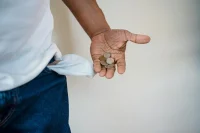As Kenya joins the rest of the World in marking World Water Day Thursday, the country’s growing population continues to face water shortages with up to 41% of Kenyans being forced to rely on unimproved water sources, such as ponds, shallow wells and rivers. Up to 59% of other Kenyans use unimproved sanitation solutions, especially in the rural areas and the urban slums, according to leading water and energy solutions company Davis & Shirtliff.
This shortage therefore means that a large population of women and children in the rural areas spend up to one-third of their day fetching water for consumption and domestic use, a daunting task which leaves them exposure to risk of attack by predators, yet the water gathered are also the most susceptible to water-borne diseases.
“Water pathogens are a huge health problem in Kenya, as the people have been left unprotected against sporadic epidemics such as cholera and parasitic worms. The rate of exposure is extremely high because the water is not only contaminated at the basins and pumps where water is collected but the containers are almost always recycled, often previously used for oil, fertilizer or wastes.” said Davis & Shirtliff CEO David Gatende.
Against this backdrop however, many steps have been taken towards getting the country to be water efficient. Gatende lauded efforts that have been made in ensuring sustainable water service delivery in Kenya is achieved.
In line with this year’s theme of ‘’Nature for Water,’’ Gatende urged other stakeholders to look at nature-based solutions and semi-natural systems that give will bring equivalent or similar benefits to the man-made systems for management of water quality and availability.
“Restoring forests, grasslands and natural wetlands, reconnecting rivers to floodplains and creating buffers of vegetation along water courses are some of the most critical measures the country has to undertake. Most nature-based solutions, including in urban landscapes, essentially involve the management of vegetation, soils and wetlands, including rivers and lakes. They can provide innovative and cost-effective options for supplementing insufficient or ageing water infrastructure,” he said.
Gatende also advocated for other measures to mitigate water shortages such as human-built reservoirs and dams to store water, for irrigation, energy generation, and control of flooding as well as protection of wetlands, purification and treatment plants.
READ: John-Allan Namu linked to Cambridge Analytica
World Water Day has been held on March 22nd annually, since its inception in 1993. The event was initiated by the United Nations General Assembly due to a concern over increased demand for water access, allocation, and services at the 1992 UN Conference on Environment and Development. World Water Day strives to bring attention to the importance of freshwater and the advocacy for sustainable management of freshwater resources.
According to UNESCO (2018), 1.9 billion people live in water-scarce areas. Most recently, Cape Town, South Africa, has been in the news for the countdown to “Day Zero” the day they shut off the public supply of water due to scarcity.











Leave a comment